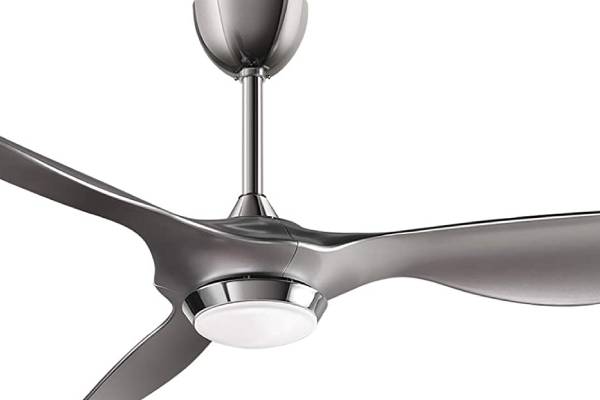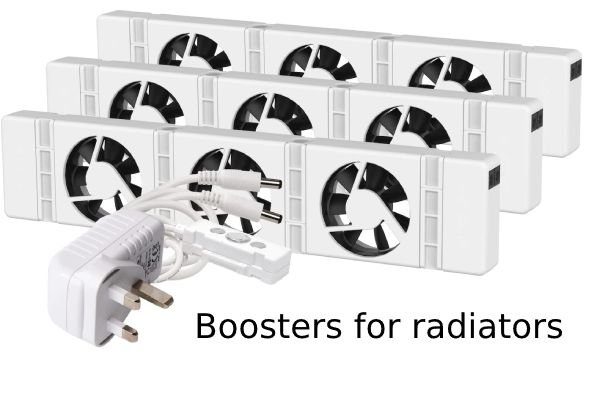Whether or not you should get a stove fan depends on your specific needs and preferences. If you have an inefficient stove and are looking for a way to make it more effective, a stove fan could be a good choice. Additionally, if you have a large, open-plan living space and are looking for a way to circulate heat evenly throughout the room, a stove fan could also be a good investment. However, if your stove is already efficient and you don’t have a specific need for improved heating, a stove fan may not be necessary.
If you are still considering getting a fan, continue to read this article…
Wood-burning stoves used to be very common in the UK before domestic gas central heating was introduced. The great thing about wood-burning stoves is they generate a lot of radiant heat, warming the air directly around them. The stoves have had a resurgence in recent years, not only for their heat generation but because they make an attractive focal point in a room.
The only downside of stoves is that they are less effective at radiating heat further into the room, which is probably why people used to sit close to their stoves in olden times. But it does mean that you can have cold spots in the room. However, this can be remedied by adding a clever little device called a stove fan.
What is a stove fan?
A stove fan helps circulate the heat generated by a wood-burning stove around the room to eliminate hot and cold spots, even out the room temperature and make the space more comfortable for everyone using it.

Signstek Log Burner Fan
- Heat powered
- No assembly required
- Working temperature: 60-345°C
- Overall Size: 9L*5.7W*14.5H(cm)
- Quiet (less than 25dB)
One of the most popular styles of stove fan is a free-standing one that sits on top of the stove and pushes the hot air rising from the stove out into the room. We all know that heat rises, so by adding a stove fan, you can prevent the heat from the stove from rising to the ceiling while the colder, heavier air close to the floor keeps your feet and legs feeling cold.
Stove fans also help to make your wood-burning stove run more efficiently. Because the heat from the stove will rise to the ceiling and effectively warm the room from the top down, it can take a while for the warm air to fill up the space and reach the floor. During this time, it is not uncommon for people to keep feeding more wood or solid fuel into the stove to make the room warm up quicker.
Adding a stove fan will help move warm air down from the ceiling and from around the stove, warm the room up quicker and reduce the need to add more fuel to the stove to generate more heat. It effectively turns your stove from generating radiant heat to producing convected heat.
How does a stove fan work?
Stove fans work in a very energy-efficiency way. They are self-powered devices that use the heat from the stove to power a small in-built electric motor and fan blade. As the heat generated by the wood burner rises up through the fan base, it heats a Peltier device that sits underneath the base of the fan blades.
Once the Peltier device is heated, thermoelectric energy is produced that powers the fan blades, which then rotate and circulate the warm air rising from the stove out into the room. No separate power source is needed to make the fan work!
How is a stove fan installed?
Free-standing stove fans are easy to install. You place them towards the rear of the stove to one side of the flue. The fan will need to have a decent clearance from walls or the back of a chimney to ensure it has good air circulation. This will help the air flow freely around the fan and work more effectively.
Your stove fan will need to sit on a flat, uncluttered surface. The stove fan will come with the manufacturer’s instructions, so it is essential that you read, understand and adhere to them.
What types of stove fans are available?
In most cases, a free-standing stove fan will meet most people’s needs. Free-standing fans are the most popular and commonly found ones available. The simplicity of these types of fans makes them so popular – you sit it on top of your wood-burning stove and let it do its thing.
Another stove fan type is the flume-mounted design. This is an excellent alternative if your wood-burning stove has no flat surface to sit a free-standing fan. Some stoves are built into chimney stacks where open fires used to be. This leaves little to no available space around the stove for a free-standing fan to fit.
Flume-mounted stove fans can be attached to the flue directly. They work the same way as a free-standing fan, but this type of fan is made using magnetic wings connected directly to flue pipes and magnetic attraction to turn the fan blades.
What are the best stove fans?

Tomersun Log Burner Fan
- Heat powered
- No assembly required
- Working temperature: 85-350°C
- Overheating Protection
- Quiet (less than 25dB)

HAWCAFU Log Burner Fan
- Heat powered
- No assembly required
- Working temperature: 85-345°C
- Material: Aluminium
- Quiet (less than 25dB)

COMBIUBIU Log Burner Fan
- Heat powered
- No assembly required
- Working temperature: 50-350°C
- Mini 12cm
- Quiet (less than 25dB)
What are the main advantages of stove fans?
The main advantages of stove fans are:
- Improved heating efficiency
- Cost savings
- Increased comfort
- Reduced noise
- Environmentally friendly
- Easy installation
- Versatility with different stove types.
Installing a stove fan means that none of the heat generated by your wood-burning stove is wasted. Rather than the warm air rising and sitting close to the ceiling, the fan will move and circulate the warm air around the room.
Because the fan will circulate and distribute warm air more evenly around the room, it will eliminate pockets of cold, stagnant air from forming in the corners of your room, making the surrounding atmosphere feel chilly and stale.
You will use less fuel in your wood-burning stove with a stove fan, effectively lowering your fuel bill and saving you money. Because you will be using less fuel, you will be generating less CO2, which is good for the environment.
What are the disadvantages of stove fans?
There is very little to complain about concerning stove fans. However, it helps to know that they only work on wood-burning stoves that reach a certain minimum temperature. This means that it is not guaranteed to work on every make and model of stove.
Stove fans are also at risk of overheating, which can cause damage to the in-built electric motor. The fans will also be too hot to touch, so it can be dangerous to young children that may be around. However, you can get a stove thermometer to help you keep a check on the temperature and prevent it from getting too hot for your fan to handle. The maximum temperature for a stove fan would be approximately 350 degrees C.
Some stove fan designs contain exposed metal blades, which can be dangerous to touch when running at full speed.
How much do stove fans cost?
Stove fans are generally inexpensive to buy, ranging between £25 to £100. However, they don’t add to your energy bills because they require zero electricity to run. No batteries are included, so you will have no extra ongoing expense from replacement batteries after purchasing a fan. It’s an investment worth considering.

Signstek Log Burner Fan
- Heat powered
- No assembly required
- Working temperature: 60-345°C
- Overall Size: 9L*5.7W*14.5H(cm)
- Quiet (less than 25dB)
Last update on 2024-04-30 / Affiliate links / Images from Amazon Product Advertising API







